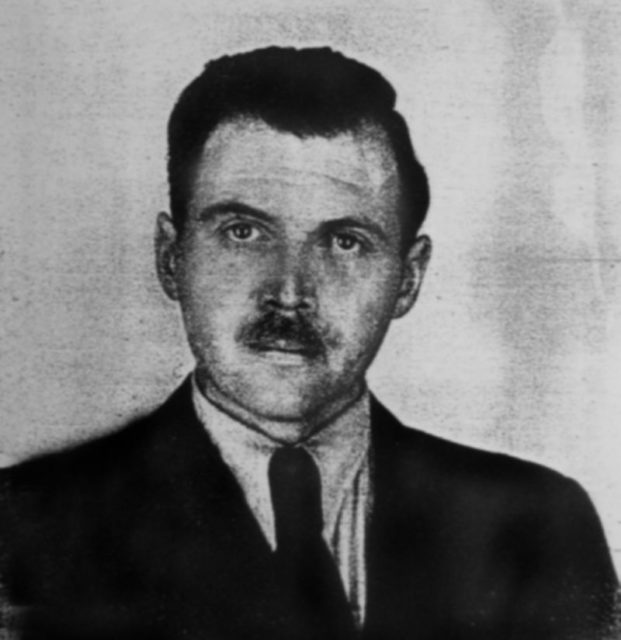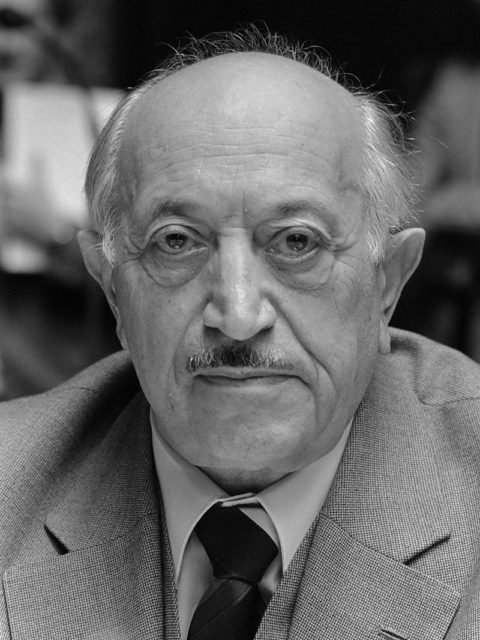World War Two was ending, and Germany was at the end of a severe trashing. During the height of the war, the atrocities committed at the hands of the Axis alliance members were well known, and justice was needed. With the sight of Germany on its knees, Axis members involved were ready to run.
But where, how, and to whom? As the Allied forces circled around and the net of justice closed in, numerous escape routes popped up. These routes, known as the “ratlines”, provided the answer for war criminals who were looking for a new home. This meant that many perpetrators were given a lifeline, and with this came an obstruction of justice. Among the ruins of the fallen Reich there sprung new hope for those looking to escape, many of whom ran off to South America to build a new life.
After the fall of the Axis Alliance (Germany, Italy, and Japan)

In 1945, the bloodiest war, which claimed over 60 million lives, was winding down to its timely end. With that came the search for justice, to bring to account those who occasioned it. The important figures like Hitler and Mussolini were dead, but many others who needed to stand trial were making plans to evade justice. But justice for those innocent men, women, and children who needlessly died desperately needed to be addressed.
The truth is that good had conquered evil, and now it was time for retribution. The Nuremberg Trials were just the beginning. There were others who had a hand in the deadly ordeal and had to be held accountable for their roles. But there were other forces at work – sympathizers who assisted in the evasion of justice.
The hunt was on for the likes of Josef Mengele, “The Angel of Death”, and his colleague Adolf Eichmann. But because of countries like Argentina, Spain, Switzerland, and others, justice would be delayed.

Justice delayed is justice denied as the ratlines sprung up.
By the time the war ended the hunt was on for those who made up the list of the ten most wanted war criminals. Among them were Josef Mengele, Eichmann, Franz Stangl and Ante Pavelic. Others had already been caught and awaited their trials at Nuremberg. But many others had the right connections and made their getaway. By 1950 many of these wanted men had slipped out of the hands of Allied forces.
The routes used to get the rats out of Europe
Spain
Spain had turned a blind eye to the atrocities that were being committed. At the end of the war, it continued to play dumb regarding the war criminals within its borders. This did nothing to endear the country to the rest of Europe and threatened to tarnish its name further.
Nonetheless, many wanted criminals lingered within its borders and international pressure was placed on Spain to give them up. But Spain had its own ideas. It allowed fugitive and anti-Semitic writer and Nazi collaborator Charles Lesca to set up camp there. With the aid of his co-conspirator Pierre Daye, they set up networks of routes out of Europe. Lesca was friendly with a Spanish officer who assisted in the escape of numerous wanted criminals. Ramón de la Peña was able to help them remove 150 Nazis to Argentina via Spain from 1946.
A shame, considering that Spain remained relatively neutral throughout the war except for sending brigades to fight on the Eastern front.
This made Spain a de facto supporter of the Axis alliance. Yet amid international pressure, more conspirators set up camp within its borders. Another escape route organizer was a Spanish woman of German decent named Clarita Stauffer. She was, in fact, a German with Spanish citizenship. She helped over 100 war criminals escape via her quasi-judicial office in Spain.
The roles of the Swiss
Not known for their active role in the war and considered neutral throughout it, the Swiss provided the perfect route out for those Nazi criminals and collaborators seeking anonymity.
Known for their dubious role in providing a safe haven for espionage and the banking of ill-gotten gains from the war, the Swiss reportedly assisted in hiding the loot stolen during the war from innocent Jewish people sent to death camps. Their role in providing a route out has underpinned their silence on such subjects throughout the post-war period. The Swiss have some questions to answer regarding the money laundered within their borders. But the worst is that senior officials allowed Nazis to pass through into Italy across their borders. One such official is reportedly Swiss police Chief Heinrich Rothmund. Together with Argentine-German Carlos Fuldner, the Swiss facilitated many criminals’ escape to South America.

Speaking of Italy
Beyond the role of the fascist leader Mussolini, the churches played a questionable role throughout the war. They blatantly turned a blind eye to the massacre of millions but provided sanctuary to murderers. This showed a side of the church that through its silence condoned behavior which resulted in the murder of millions. Yet they saw fit to justify their actions of harboring wanted war criminals. The Catholic Church played an active part in denying the victims of this tragedy a chance of justice, in the most hypocritical way, by supporting Nazism over humanity.
The spread of communism was a weak excuse as the fascists showed their bloodlust. And two churchmen, Bishop Alois Hudal and Monsignor Krunoslav Draganović, had a rather deep role in the genocide that has become known as the Holocaust.
Bishop Alois Hudal: A Bishop of Austrian Decent
A lover of the Nazi regime and said to have been a secret member, Hudal was known to openly support them and was active in providing refuge in Rome. Reports link him directly to the escape of Adolf Eichmann and Franz Stangl. The man dubbed the “Architect of the Holocaust” was assisted by Hudal, who had the connections and money to get war criminals out of Europe. He was able to use his influence to vouch for the identities of these men and, in so doing, denying the victims justice. He used the Red Cross to get papers verified for Nazis and was the recipient of ill-gotten gain. He would use the monasteries as shelters for the war criminals. It’s reported that he even assisted the man who committed over a million murders in Austria (Franz Stagl) get a job in Damascus.

Monsignor Krunoslav Draganović: Croatian Bishop linked to the Ustashe
What can be said about Monsignor Krunoslav Draganović is that he supported the worst warlord Croatia has ever known and the man who tried to outdo the SS in brutality and cruelty that saw many Serbs, Jews and gypsies die – literally in their hundreds of thousands, slaughtered without remorse.
To add insult to injury, the Monsignor assisted in the escape of those monstrous men. Monsignor Krunoslav Draganović was closely linked to the Ustashe, the Croatian Nazi army. He assisted their fascist leader, Ante Pavelić, in escaping to Argentina.
But what he was most famous for is using the Ustashe loot to his advantage. He is also noted for his influence in assisting Klause Barbie, “The Butcher of Lyon”, escape and, with the knowledge of the U.S., to evade French officials.
Don’t Cry for me Argentina
Argentina was the safest haven for Nazis in South America. Many of the most wanted war criminals made it their home, mainly due to their non-extradition arrangement with the Allied countries and also due, in part, to President Peron’s reverence for the Axis alliance, especially Nazi Germany.
In the history of war criminals coming out of Europe, Argentina is the country that welcomed them with open arms. It was known that during the fall of the Nazi regime, Argentina was brimming with over 250,000 Germans. So as not to unsettle their contingent of European occupants who supported the Nazis, they assisted in the escape of the Nazi criminals. They did this to appease their contingent and solidify their relations with the Axis alliance, even though they nominally remained neutral. They saw it fit to appease the Germans in case they needed assistance against the U.S. and the USSR.
ODESSA cited as the creation of an overactive imagination
To disprove that, we would need to refer to the book by Frederick Forsyth, published as The ODESSA File, which was inspired and contributed to by the Jewish Nazi Hunter Simon Wiesenthal.
He is said to have supplied Forsyth with the name of ODESSA for the book and contributed to the character Eduard Roschmann.
But ODESSA was a code name for either a smaller organization of ratlines set up to assist the escape of Nazis or just the shadowy organization that assisted in Nazi escape routes. What is a fact is that the name first appeared in 1946 and was used by former SS men. There have been many denials of its existence.
Considering the atrocities the Nazis and their allies committed, it is hard to believe that anyone associated with the Nazis or their escape routes would admit to its existence. This was the stance of the men who assisted Alois Hudal. What is known is that the ratlines worked as smaller organizations. It is not known if they coordinated their efforts, but it does not seem that they did. The sinister element of the organization is that ODESSA may have been an attempted revival of the Nazi regime against Israel, About Education reported.
What is certain is that the work of these ratlines helped many evade justice. They allowed war criminals to escape to countries like those in South America where they were free to set up new lives. Many of these criminals were able to evade the long arm of the law for many years, even decades. Josef Mengele was able to live his entire life in Argentina without answering for his crimes. Adolf Eichmann wasn’t as lucky, as Mossad snatched him in 1960 off the streets of Buenos Aires. He was the first and only person in Israel’s history to receive the death penalty. Others received justice only years after, like Dr. Gerhard Bohne, who was in responsible for killing many of the infirm, ill, and old in Germany.

Others, like the genius aviator Herbert Cukur, were assassinated by Mossad.
Read another story from us: The escape of Nazi criminals to Argentina
The sad truth is that many more have not answered for the bloodiest, most inhumane period in human history; this in great part is due to the activities of those who aided their escape.
